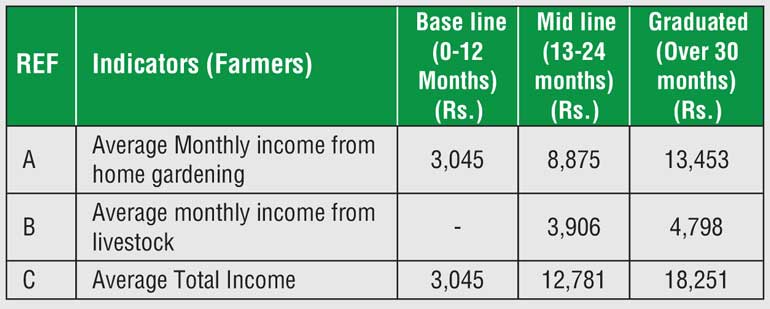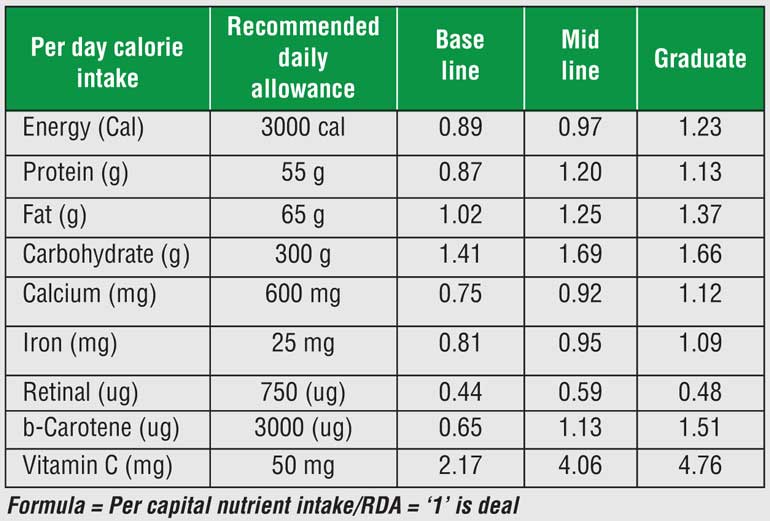Thursday Apr 25, 2024
Thursday Apr 25, 2024
Monday, 20 June 2016 00:00 - - {{hitsCtrl.values.hits}}
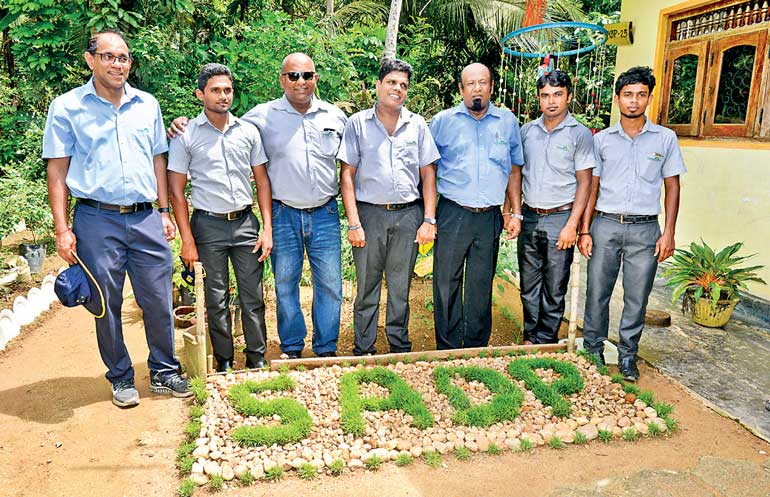
Outreach Project staff 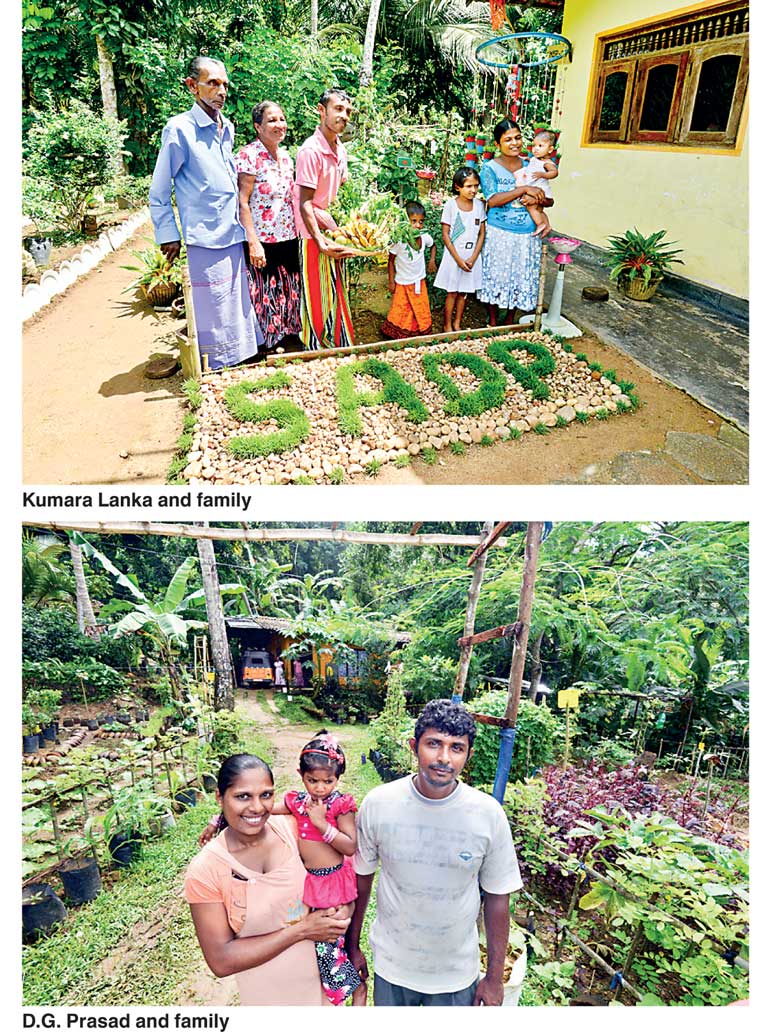
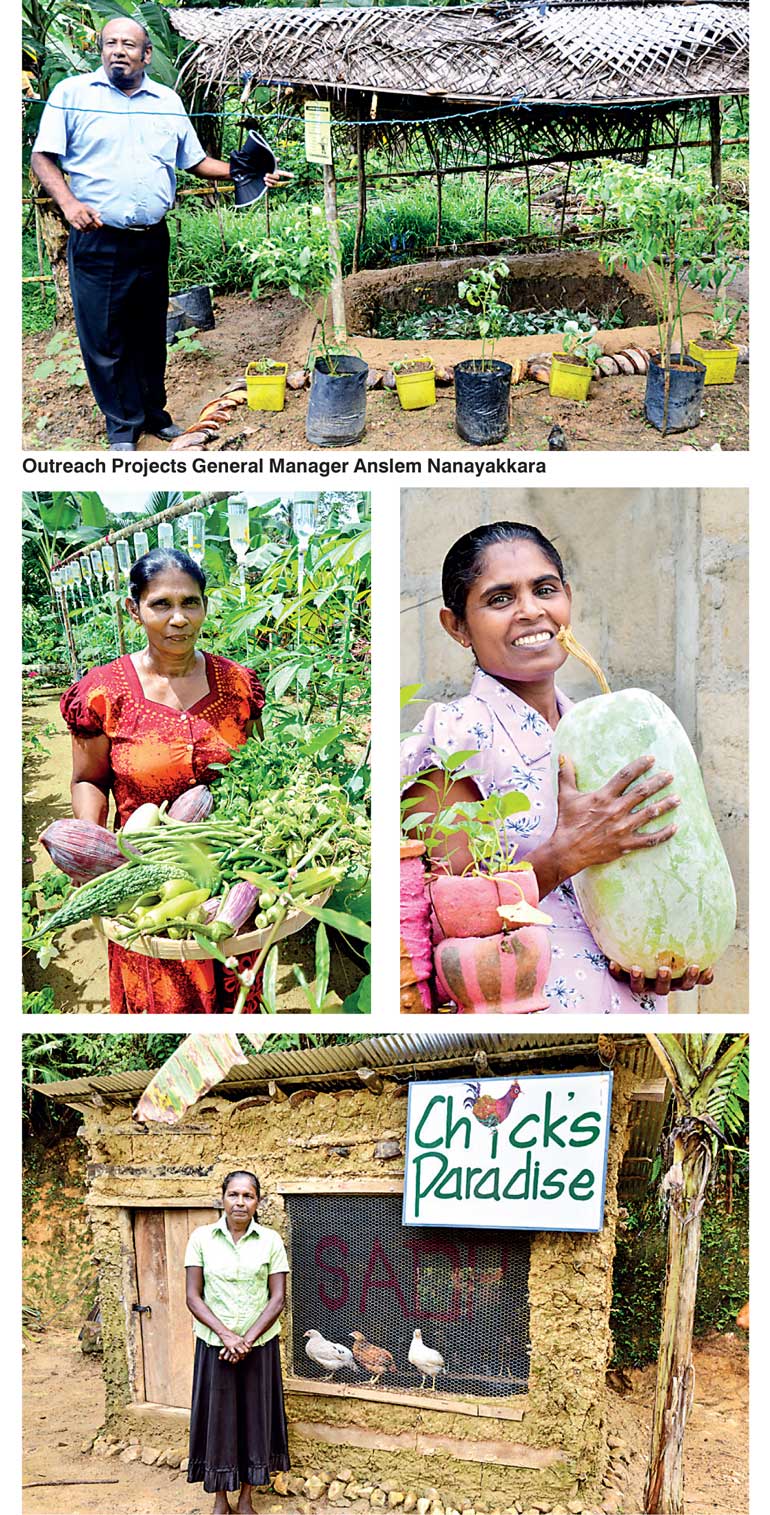
By Hiruni Dabarera
A new era of self-sufficiency has dawned upon the farmer families in Weligama who earlier struggled to make their ends meet through the Sustainable Agricultural Development Programme (SADP) executed as the flagship Corporate Social Responsibility (CSR) initiative of Ceylon Tobacco Company (CTC).
The Daily FT recently joined CTC on a trip to Weligama to celebrate 10 years of SADP in sustainable development through rural empowerment and met with five families that shine light on SADP’s success over the years. The selected families belonged to the 15% of total poverty population in Sri Lanka.
“These families did not have a stable source of income before. They were engaged in various odd jobs and found it difficult to provide even the staple three meals for their families per day. However, at present with correct guidance and assistance from the SADP officials, their children are able to enjoy meals with high nutritional value and also to cut back on their expenses spent on food,” shared CTC’s special CSR arm Outreach Projects (Guarantee) Ltd. General Manager Anslem Nanayakkara, with Daily FT.
First we met with three families who were five months into the SADP and still adjusting their lifestyle to home gardening and animal rearing. The monthly wage of these families was only about Rs. 3,000 before and they struggled to suffice their families with even two meals a day.
“Now, thanks to these officials our children are able to enjoy fresh garden produce with their meals daily which are quite high in nutritional value. Soon our chickens who were provided to us by the SADP officials will lay eggs and we will be able to sell them at the weekly fair,” said D.G. Prasad smiling and with hope gleaming in his eyes. It seemed that through this sustainable approach they not only enjoyed economic benefits but have arrived at more stabilised and organised lifestyles.
Surrounding Prasad’s humble home was ample land which was now utilised to make carbonic compost, grow vegetables and poultry farming. The use of used ice cream tubs and plastic water bottles to grow greens and vegetables like tomatoes and chillies validated how these farmers were guided to be sustainable in the truest sense.
“We select families based on their commitment and capability to adopt and adapt to the technology and best practice transfers. A mind shift is created in the participants to believe in their ability to make a better life for themselves,” commented Nanayakkara.
The use of innovative insect repellents that is termed as Integrated Pest Management (IPM) in their home gardening was quite commendable. There were yellow boards attached to poles struck on the ground with oil or grease on them that attracted various pests and harmful insects and plastic bottles with pineapple or mango liquids inside that secreted a scent similar to pheromone secreted by female insects trapped pests. Coconut husks were laid near vegetable beds with grains or rice strewn on them as they attracted birds and thus, prevented them from picking the seeds or flowers in the plants.
“When providing these families with vegetable seeds we ensure that they are suitable to the area they are grown in. For farmers in Weligama we encourage the plantation of snake gourd, bitter gourd, ladies fingers, cabbage and capsicum,” elaborated Nanayakkara further.
“Since I am working from home I am able to help my wife in the household chores now while looking after our three children. My wife is also empowered through this program as her significant role in the house is recognised,” expressed D.G. Rohitha to Daily FT.
Through pocket meetings, monthly meet ups, farmer training classes and officials assigned to each family to be vigilant of their progress, the consistency of the SADP program was assured to the farmer families.
Next we arrived at two farmer families who were termed by Outreach Project officials as ‘Graduated Farmers’. These were families who have successfully completed their two and half year programme with SADP and functioning on their own at present.
“It is because of SADP that my family is able to live happily and comfortably today. Earlier I went around doing odd jobs and I did not have enough money to send my children to school or to feed them properly. With the help of my mother and wife our home gardening is thriving and animal husbandry has also progressed. Today, three years since inception, my children eat properly and engage in their educational activities well. I am able to live without being a burden to anybody,” said Kumara Lanka with much pleasure and gratification to us.
At present his family is earning revenue of Rs. 12,000-Rs. 14,000 a month while the amount of expenditure they spend on vegetables, eggs and milk have become quite negligible. The goats and hens they rear provide their children with milk and eggs.
“The necessary guidance and assistance provided to engage in mushroom cultivation proved to be quite beneficial to us. I earn an income closer to Rs. 4,000 each month from mushroom cultivation alone,” added Kumara Lanka.
According to him mushroom cultivation is collected once in two days and carried on continuously for three months. To get the fungus in it requires 28 to 30 days, and has to be kept in the dark for two months. Then they are met with a gap of two weeks to spray fungicides until the next batch of mushrooms is prepared. The officials have recommended them several brand names like Lahiru and Krishna to purchase mushrooms from the open market that is priced at Rs. 90 each. From one packet they can insert mushrooms into hundred packets after three months.
By selling their goats to other SADP families which has a market price of about Rs. 20,000 they are able to earn an additional source of income.
An independent study conducted by Ernst and Young in July 2015, revealed the under-mentioned income levels during different time periods of the program.
The independent study conducted also revealed that the intake of calories by SADP families were in line with the levels recommended by the WHO and improving with the progression of the project. Given below is the average nutrition intake at different levels.
About SADP
SADP is a four stage, two and a half year program operating on the philosophy of ‘helping those who are willing to help themselves’ in an effort to support a national priority; achieving the Millennium Development Goal No. 1 – Alleviate poverty. Started as a pilot project in 2005 with 100 families, SADP has now expanded to 18,464 families, 71,285 beneficiaries and 16 districts. Over the years it has been commended by the Asia Responsible Entrepreneurship Awards and won the ‘Best Environmental Value Addition Project’ in the category of Social Empowerment at the Best Corporate Citizen’s Awards organised by the Ceylon Chamber of Commerce in 2013.
During stage one farmers eligible for the program are registered, their land is prepared for cultivation, compost pits which are six feet in length, two feet in breadth and two feet deep are made, Grilicidia fences are fixed, plants and seeds are issued and field support is handed out. Stage one is usually for a period of six months.
In stage two which usually ranges from seven to 15 months clusters and societies are formed, poultry is issued (one and half month old chicks; 80% female and 20% male) and beekeeping and mushroom cultivation is introduced.
Animal husbandry is issued to farmers in stage three which spans over 16 to 24 months.
During the fourth stage which is the final stage farmers are prepared for graduation and graduated after 30 months.
To qualify for SADP, families need to be earning a monthly income less than Rs. 3,943, a basic house with 20-40 perches of cultivatable land and access to water for at least 10 months of the year. The program do not provide any financial support but empowers families with agriculture knowledge and resources such as seeds, plants and poultry thus encouraging home gardening in addition to bee keeping, mushroom cultivation and goat rearing.
The objectives of SADP are as follows:
During 2016 SADP hopes to implement the programme among 19,000 rural families and to achieve the expected benefits mentioned above.
SADP Stages
SADP (2005): The poverty alleviation program under which people living below the poverty line in selected rural villages from 11 districts of Sri Lanka are provided with the required input to become self-sufficient through home gardening and animal husbandry.
SADP PLUS (2009): With the liberation of the Eastern Province 1700 selected farmers from Trincomalee and Kilinochchi districts were introduced to SADP to develop self-sustenance through home gardening and developing livelihoods through cash crop cultivation. In 2012 SADP took in another 1,000 farmers from Kilinochchi and at present empowers over 4,534 beneficiaries.
SADP LITE (2010): Introduced to assist 1,500 ex-LTTE combatants (beneficiaries) by imparting agriculture-related vocational training at the request of the Ministry of Rehabilitation and Prison Reforms. This program is conducted at Kandakadu government farm in the Polonnaruwa district. The duration of this program is 12 months.
SADP MEGA (2011): Initiated in Sooriyawewa to boost the know-how of agricultural entrepreneurs in the Southern region, the project comprises of a 12-acre organic model farm that imparts and showcases agri-techniques and best practices.
SADP ULTRA (2013): The project was launched in 2013 and continued through 2014 and 2015, to introduce tobacco farmers to better crop management techniques and to promote the growing of Other Field Crops. Spread over seven districts, SADP ULTRA benefits 4,100 individual Tobacco farmers, totalling over 16,000 beneficiaries.
Pix by Daminda Harsha Perera
